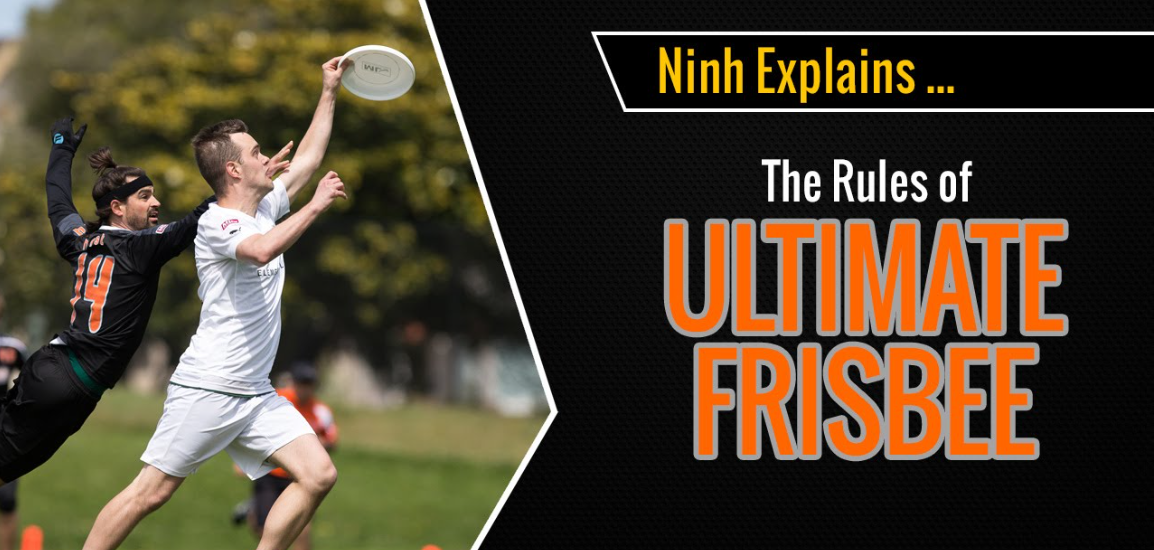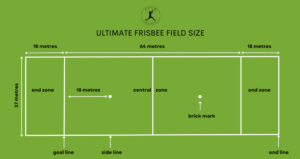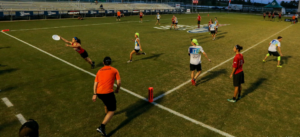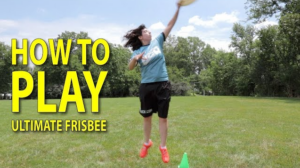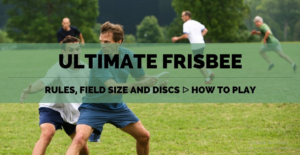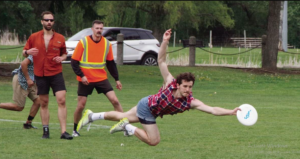samwyche.com – Ultimate Frisbee Rules! often simply referred to as “Ultimate,” is a thrilling and fast-paced team sport that combines elements of soccer, basketball, and football, all with a flying disc. This exciting game is played on a rectangular field with two teams of seven players each, and the objective is simple yet challenging: score points by catching the disc in the opposing team’s end zone.
But as straightforward as it may sound, Ultimate Frisbee has a unique set of rules that govern the game and ensure fair play. Understanding these rules is not only essential for participating in the sport but also for appreciating the strategy and teamwork that make Ultimate Frisbee such an exhilarating experience.
In this comprehensive guide, we will break down the rules of Ultimate Frisbee from the ground up. Whether you’re a newcomer looking to learn the basics or a seasoned player seeking a refresher, we’ve got you covered. We’ll explore the fundamental aspects of the game, including how it starts, how points are scored, and the key rules that govern gameplay. Additionally, we’ll delve into some of the more advanced strategies and techniques that can help take your Ultimate Frisbee skills to the next level.
So, whether you’re gearing up for your first Ultimate Frisbee match or simply curious about this unique sport, let’s dive into the world of Ultimate Frisbee rules and discover what makes it such an exciting and inclusive game.
The Basics of Ultimate Frisbee Rules
In Ultimate Frisbee, understanding the fundamental rules and concepts is crucial before you hit the field. Let’s start with the basics:
1. Objective of the Game
The primary objective in Ultimate Frisbee is to score points by catching the flying disc (Frisbee) in the opposing team’s end zone, similar to scoring a touchdown in American football. Each team has an offensive and defensive role, and they must work together to advance the disc up the field and into the end zone.
2. The Playing Field
Ultimate Frisbee is typically played on a rectangular field that is 70 yards long and 40 yards wide, with end zones at each end that are 25 yards deep. The field is marked with boundary lines, including sidelines and end lines.
3. Equipment Needed
To play Ultimate Frisbee, all you need is a flying disc, also known as a Frisbee. The official disc used in competitive play adheres to specific size and weight standards, but for casual games, any flying disc will suffice. Players usually wear comfortable athletic clothing and cleats for traction.
4. Team Composition and Positions
Each team in Ultimate Frisbee consists of seven players on the field at a time. There are two main positions:
- Handlers: Handlers are typically responsible for initiating and controlling the offense. They use short, accurate throws to advance the disc and maintain possession.
- Cutters: Cutters are players who make quick, dynamic movements to get open for passes from handlers. They aim to catch the disc in the end zone to score points.
5. Starting a Game
Before a game begins, teams gather at the center of the field for a “pull,” which is similar to a kick-off in football. The receiving team catches the pull and starts play from there. The game officially starts when the pull is released.
6. Scoring in Ultimate Frisbee
Points are scored when a player catches the disc in the opposing team’s end zone. A team earns one point for each successful catch in the end zone. After a point is scored, the teams switch roles, with the scoring team becoming the defense and the other team beginning on offense.
These fundamental concepts lay the groundwork for understanding Ultimate Frisbee. As we delve deeper into the rules and strategies of the game, you’ll gain a more comprehensive understanding of how this dynamic sport is played. Next, we’ll explore how a game of Ultimate Frisbee gets underway, from the initial pull to the first throw-off.
Starting a Game Ultimate Frisbee Rules
In Ultimate Frisbee, starting a game involves a series of rituals and procedures that set the stage for an exciting match. Let’s break down the steps involved in starting a game of Ultimate Frisbee:
1. The Coin Toss:
- Before the game begins, the two team captains participate in a coin toss at the center of the field. The winner of the toss gets to choose one of two options:
- To receive the initial pull (start on offense)
- To choose the side of the field they want to defend
2. Initial Setup:
- After the coin toss, the teams proceed to their respective end zones. The team that won the toss sets up in their chosen end zone as the receiving team, while the other team sets up in the opposite end zone as the pulling team.
3. The Pull:
- The game starts with a “pull,” which is similar to a kick-off in football. A player from the pulling team stands at the back of their end zone with the disc and signals readiness.
- When both teams are ready, the pulling team throws the disc towards the receiving team to initiate play.
- The receiving team catches the pull and immediately begins their offensive possession from where the disc is caught.
4. Initiating Play:
- After catching the pull, the receiving team’s player who caught the disc becomes the “thrower” or “handler.”
- The thrower has ten seconds (the “stall count”) to initiate a throw. They must establish a pivot foot and start the count by announcing “Stalling 1…2…3…,” etc.
- The defending player guarding the thrower counts aloud to maintain the stall count.
5. Defensive Positioning:
- While the pull is in the air and during the stall count, the pulling team must quickly transition into a defensive position, marking their assigned opponents and preventing them from gaining easy passes.
6. The Game Begins:
- Once the stall count reaches “Stalling 10,” the thrower must release the disc. If the disc is not thrown by the count of 10, it results in a turnover, and the opposing team gains possession.
- The game officially begins when the disc is released by the thrower. From this point on, players work to advance the disc up the field and score points.
Starting a game in Ultimate Frisbee is a critical moment that sets the tone for the match. The pull and the initial throws require precision and strategy, as they determine which team gains the upper hand in the early stages of the game. As the game progresses, teams alternate between offense and defense, aiming to outmaneuver their opponents and ultimately emerge victorious by scoring points in the opposing team’s end zone.
Gameplay Ultimate Frisbee Rules
In Ultimate Frisbee, the rules governing gameplay are designed to ensure fair competition and promote sportsmanship. Understanding these rules is essential for both players and spectators. Let’s explore some of the key gameplay rules:
1. The Stall Count:
- When a player has possession of the disc, they must establish a pivot foot and initiate a stall count by saying “Stalling 1…2…3…,” and so on. The count goes up to 10.
- If the defender reaches “Stalling 10” without the thrower releasing the disc, it results in a turnover, and the opposing team gains possession.
2. Traveling:
- Players must establish a pivot foot after catching the disc and cannot take steps without establishing this pivot.
- “Traveling” is called if a player takes steps without establishing a pivot foot. This results in a turnover.
3. Turnovers and Possessions:
- A turnover occurs when:
- The disc is dropped or goes out of bounds.
- The stall count reaches 10.
- A pass is intercepted by the defense.
- A foul is committed, and the player contesting the foul disagrees.
- When a turnover happens, the opposing team immediately gains possession and becomes the offense.
4. Substitutions and Timeouts:
- Substitutions can typically be made after a point is scored and during stoppages in play.
- Each team has a limited number of timeouts that can be called during a game to regroup, strategize, or rest players.
5. Fouls and Violations:
- Ultimate Frisbee places a strong emphasis on fair play and the “Spirit of the Game.” Players are expected to call their own fouls and violations, and disputes are resolved through discussion.
- Common fouls include contact between players while contesting a catch, dangerous plays, or double teaming.
- Players should announce “Foul” or “Violation” when they believe a rule has been broken. If the players cannot reach a resolution, the disc is sent back to the thrower.
6. Traveling and Pivot Foot:
- When a player has possession of the disc, they must establish a pivot foot, and they can only move one foot while maintaining the other as the pivot.
- A “traveling” violation is called if a player takes more than one step before releasing the disc while holding it.
- When a player is marked by a defender, they must pivot around the established foot and cannot switch pivot feet.
7. Double Team and Marking:
- Defenders are not allowed to double-team a single offensive player. Only one defender can actively mark a thrower at a time.
These are some of the core gameplay rules in Ultimate Frisbee that help maintain a fair and competitive environment. The sport’s self-officiating nature and emphasis on the Spirit of the Game contribute to a unique and sportsmanlike atmosphere on the field, making Ultimate Frisbee a true testament to teamwork and respect. As you become more familiar with these rules, you’ll be better equipped to enjoy the game and participate in it effectively.
Explaining fouls in Ultimate Frisbee
Fouls are a common occurrence in Ultimate Frisbee, and understanding them is crucial for fair play. In Ultimate, fouls are infractions of the rules that occur during gameplay. Here’s a detailed explanation of fouls in Ultimate Frisbee:
1. Contact Fouls:
- Contact fouls are the most common type of fouls in Ultimate Frisbee and occur when there is physical contact between players involved in a play, such as a pass attempt or a catch.
- If a player believes they were fouled, they should immediately announce “Foul!” This stops play, and the disc goes back to the thrower, retaining the stall count where it left off.
2. Non-Contact Fouls:
- Non-contact fouls occur when there is no physical contact but a rule is still violated. For example, if a player travels (moves their pivot foot), it’s a non-contact foul.
- As with contact fouls, non-contact fouls also result in the disc being returned to the thrower.
3. Dangerous Play:
- Dangerous play fouls are called when a player’s actions are deemed hazardous to others on the field. This can include reckless bids for the disc that risk colliding with opponents.
- When a dangerous play foul is called, play stops, and the disc goes back to the thrower.
4. Strip:
- A strip occurs when the defender successfully knocks the disc out of the offensive player’s hand after they’ve caught it.
- If the offensive player had possession before the strip, they retain possession at the spot where the strip occurred. If there is disagreement on whether the player had possession, it’s often resolved by sending the disc back to the thrower.
5. Traveling:
- Traveling fouls happen when a player takes more than one step before releasing the disc. This is a violation of the pivot foot rule.
- A traveling violation results in a turnover, with the opposing team gaining possession.
6. Double Team:
- Double team fouls occur when more than one defender is marking a single offensive player. Only one defender is allowed to actively mark the thrower at any given time.
- When a double team is called, play stops, and the offensive player can choose which defender to reset the disc to.
7. Picking:
- Picking fouls happen when an offensive player uses their body or positioning to impede a defender’s ability to cover their assigned offensive player.
- The result of a picking foul depends on whether the pick affected the outcome of the play. If it did, the disc goes back to the thrower.
8. Striking Fouls:
- Striking fouls occur when a player intentionally strikes an opponent with their hand or arm during gameplay.
- Striking fouls are considered a serious violation and can result in a player being ejected from the game, depending on the severity of the foul.
In Ultimate Frisbee, it’s essential for players to communicate and resolve fouls with the “Spirit of the Game” in mind. This principle emphasizes fair play, honesty, and respect for opponents. Players are encouraged to discuss fouls calmly and work towards a resolution on the field, promoting a self-officiating and sportsmanlike atmosphere that sets Ultimate Frisbee apart from many other sports.
Game Duration and Overtime in Ultimate Frisbee
Understanding how long a game of Ultimate Frisbee lasts and what happens in the event of a tie is essential for players and spectators alike. Let’s explore the game duration and overtime rules:
Game Duration:
- In most standard Ultimate Frisbee games, the match is played to a pre-determined number of points, typically 15 or 17 points for club or college-level play, respectively.
- The game is divided into two halves, with teams switching sides at halftime. Halftime usually occurs when one team reaches half the pre-determined point total, e.g., 8 or 9 points in a 15-point game.
- Each point is initiated with a pull, and the team that scores the previous point pulls to the receiving team to start the next point.
- A game is typically played with a time cap, which is the maximum amount of time the game can last. If the time cap is reached during a point, teams finish that point, and the game is then played to a specific point total plus one (e.g., if the time cap is reached at 14-14 in a game to 15, the game is played to 15 points).
Overtime Rules:
- Overtime in Ultimate Frisbee occurs when the game is tied at the end of regulation play, and the time cap has not been reached.
- During overtime, the first team to score an additional point wins the game. Overtime points are often referred to as “universe points.”
- The receiving team for the first universe point is determined by a “flip” or other agreed-upon methods, such as a game of Rock, Paper, Scissors.
- Overtime points are particularly intense, as the next point scored decides the winner.
Tiebreakers:
- If the game is tied at the end of overtime, additional tiebreakers, such as sudden-death points or sudden-death overtime periods, may be used to determine the winner.
- The specific tiebreaker rules can vary depending on the level of play and the tournament format.
Tournament Play:
- In some tournaments and competitive settings, games may be played with time caps but no hard point caps, meaning that teams continue playing until a winner is determined, even if it means exceeding the initially specified point total.
It’s important to note that the exact rules for game duration, overtime, and tiebreakers may vary depending on the level of play and the specific tournament or league in which Ultimate Frisbee is being played. Players and teams should familiarize themselves with the specific rules of the event they are participating in to ensure a fair and enjoyable experience. Ultimately, the combination of time limits, point totals, and overtime rules ensures that Ultimate Frisbee games are exciting, competitive, and well-suited to various formats and settings.
Conclusion
Ultimate Frisbee, often referred to simply as “Ultimate,” is a sport that combines athleticism, strategy, and the spirit of fair play. In this comprehensive guide, we’ve delved into the rules and basics of Ultimate Frisbee, equipping you with the knowledge you need to enjoy and participate in this thrilling game.
Ultimate Frisbee is not only a sport but also a community that values inclusivity and the “Spirit of the Game,” which encourages players to respect their opponents, make honest calls, and prioritize fair play. As you step onto the Ultimate Frisbee field, whether as a beginner or an experienced player, you’ll find a unique combination of competition and camaraderie that sets this sport apart.
So, whether you’re chasing down a floating disc on the sunny grassy fields or cheering from the sidelines, you’re now well-equipped to enjoy the excitement of Ultimate Frisbee and embrace the values that make it a truly exceptional sport. Get out there, play, and experience the joy of the game for yourself!
